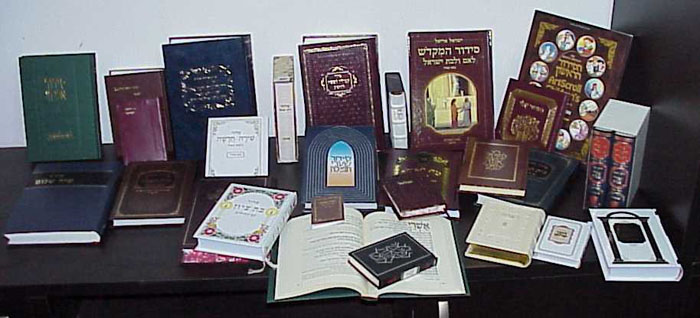A siddur is the Jewish prayer book containing prayers according to the order of the Jewish calendar. It is the instrument of synagogue worship and includes prayers for weekdays, Sabbath, New Moon and all the festival and fast days, together with the relevant halakhot (guidleines) preceding each section. At the end it contains benedictions and special prayers for special occasions such as marriage, circumcision, redemption of the firstborn, and the burial service. It contains passages from the Talmud and the Bible, and selections written by rabbis and poets through the Middle Ages.
The siddur is the most read, handled and loved Hebrew text next to the Bible. Its status makes it one of the most sacred books of Judaism, second only to the Bible. It is written mostly in Hebrew, but some prayers are in Aramaic, the language used by the Jews in their everyday life in ancient Babylonia. A siddur also contains the language of the country where it is read, so in Australia it contains English translations; in France, French, and so on.
In ancient times books containing the texts of the daily prayers did not exist (the printing press had not yet been invented, so books were written by hand and consequently were rare and very expensive). Prayer was very different then: the reader would pray aloud and the congregants would chant the words along with him. The prayers were only written down after the completion of the Talmud, when many of the components of the Oral Tradition were first put into written form.
The word ‘siddur’ (or seder) means ‘order’ or ‘arrangement’. The prayers in the siddur were arranged to closely follow the order of sacrifices in the Temple. Prayer in a synagogue came to take the place of sacrifices in the Temple after its destruction.
All daily prayer books include the three daily services, and many contain numerous additions such as the Psalms and the Song of Songs.
The siddur is more than just a prayer book. It is revealed as a vast repository of the Jewish faith when properly studied and understood. It is a record of the great victories and tragic defeats Israel has experienced during her long history. It is a testimony to the aspirations and hopes of the Jewish people for all time. It provides insights into daily Jewish living and all life cycle events in the calendar. The siddur is for study as well as prayer; moral instruction and ethical guidance as well as personal pleas. Duties and rights are both emphasised. It provides a record of Israel’s relationship with God.
The siddur as we know it today is based on the one compiled by Amram ben Sheshna in Sura, Babylonia about 1200 years ago. It is the end product of a slow historic process. The siddur has always remained open to new prayers to meet the needs arising from new situations. This gives it the added dimension of timelessness, and suits it admirably to the spiritual needs of the Jewish people.
Related Pages
LINKS
Chabad: The Prayer Book
Judaism 101: Jewish Liturgy
My Jewish Learning: Siddur: Jewish Prayer Book
My Jewish Learning: How to Choose a Siddur (includes information about differences between the siddur used by various streams of Judaism)



